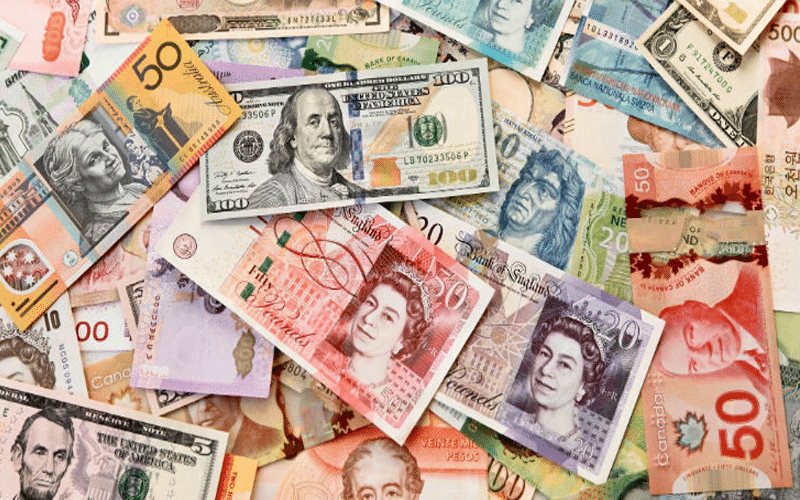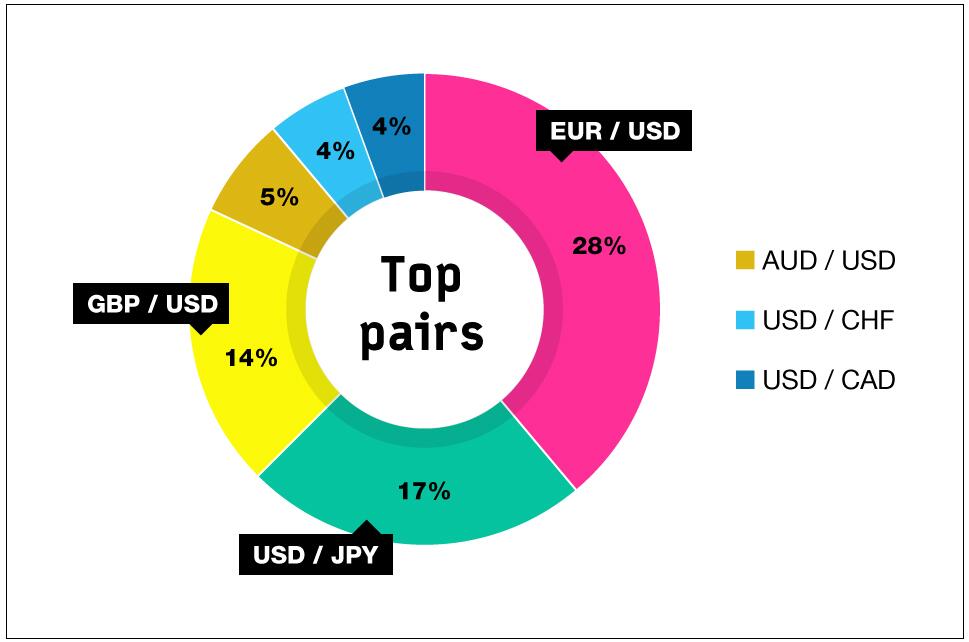Unveiling the Currency Kaleidoscope: Exploring the Vibrant World of Forex

Image: forexezy.com
In the heart of the global financial market lies a vibrant realm where currencies dance and the world’s economic heartbeat echoes – the Forex market. It’s a place where the ebb and flow of international trade, politics, and sentiment reign supreme.
At its core, Forex is the currency trading market, where trillions of dollars change hands every day. It serves as a platform for businesses, investors, and central banks to exchange one currency for another, enabling seamless international commerce and fostering economic growth.
To navigate this multifaceted market, understanding the currencies that underpin its operations is essential. Here, we unravel the tapestry of currencies traded on Forex, highlighting their significance and exploring the forces that shape their value:
1. United States Dollar (USD)
Indisputably, the US dollar lords over the Forex market, accounting for nearly half of all transactions. Its dominance stems from the United States’ economic might, its unparalleled military power, and its role as the global reserve currency.
2. Euro (EUR)
As the official currency of the European Union, comprising 19 member states, the Euro holds its place as the second most widely traded currency. Its strength lies in the EU’s robust economic landscape and its strong political ties.
3. Japanese Yen (JPY)
Japan’s highly developed economy and its reputation for financial stability make the Yen an attractive option for investors seeking a haven from market volatility. It ranks third in global currency trading volume.
4. British Pound (£)
Once the currency of a vast empire, the British Pound retains its influence within the Forex market. It serves as a barometer for the UK’s economic health and is particularly vulnerable to political developments.
5. Chinese Renminbi (CNY)
China’s burgeoning economy has propelled the Renminbi (also known as the Yuan) into the top five traded currencies. Its growing importance reflects China’s global economic footprint and its ambition to become a leading financial powerhouse.
6. Canadian Dollar (CAD)
The Canadian Dollar is closely tied to the fortunes of Canada’s natural resource sector, primarily oil and gas. Its value often fluctuates in response to global energy market dynamics.
7. Swiss Franc (CHF)
Switzerland’s long-standing reputation for neutrality, financial stability, and banking secrecy has made the Swiss Franc a go-to currency for investors seeking safety and stability.
8. Australian Dollar (AUD)
Australia’s vibrant economy, driven by exports of natural resources, underpins the value of the Australian Dollar. Its performance is often a bellwether for the global economic sentiment towards commodities.
9. New Zealand Dollar (NZD)
The New Zealand Dollar, also known as the Kiwi, is strongly influenced by the country’s agricultural exports, notably dairy products. Its value tends to be sensitive to changes in global demand for these commodities.
10. Mexican Peso (MXN)
Mexico’s proximity to the United States and its growing status as a manufacturing hub have made the Mexican Peso a significant currency in the Forex market. Its value is often affected by trade policies and economic linkages between the two countries.
Forces Shaping Currency Values
The value of currencies in the Forex market constantly fluctuates, driven by a multitude of factors:
- Economic Performance: Strong economic growth, low inflation, and stable financial systems tend to bolster a currency’s value.
- Interest Rates: Central banks raise or lower interest rates to influence currency values, making them more or less attractive to investors.
- Political Developments: Political stability and policy decisions can significantly impact a country’s financial outlook and currency performance.
- Global Economic Conditions: Currency values are also influenced by broader global economic trends, such as interest rate differentials, geopolitical events, and market sentiment.
- Speculation: Forex traders sometimes engage in speculative trading, driven by market sentiment and technical analysis, which can contribute to currency fluctuations.
Conclusion
The currencies traded on Forex represent the vibrant tapestry of global trade, economic conditions, and political realities. Understanding their nuances and the forces that shape their value is crucial for anyone seeking to navigate the complexities of this dynamic market. From novice investors to seasoned traders, gaining insights into the world of Forex currencies can empower informed decision-making and unlock opportunities for financial success. As the Forex market continues to evolve, its vibrant kaleidoscope of currencies will continue to reflect the ebb and flow of the global economy, providing both challenges and opportunities for those who dare to explore its enigmatic depths.

Image: mundurek.com
List Of Currencies Traded On Forex






